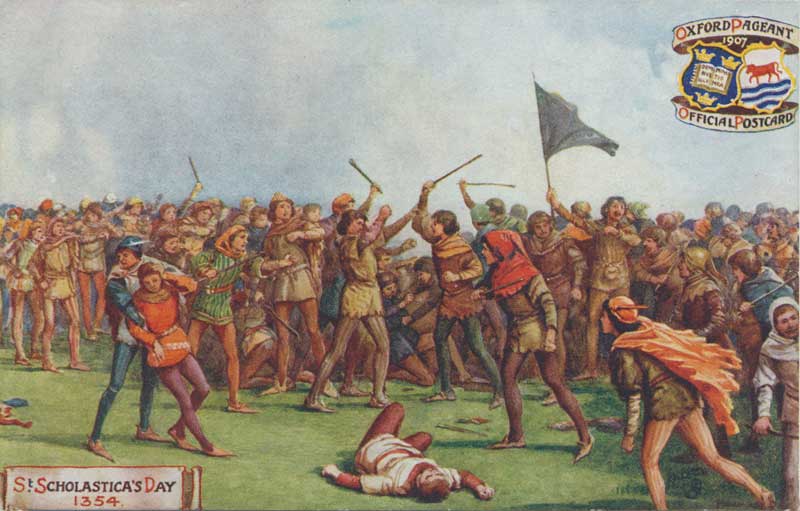Feb. 10, 1355, was the feast day of Saint Scholastica in Oxford, England. Students from the University of Oxford were drinking in the Swindlestock Tavern, but two were unhappy with the quality of the wine. Heated words were exchanged with the tavern owner, and a fight broke out. This was only the latest incident in centuries of conflict between the “town and gown.”
The rest of the inn quickly joined in, and it devolved into a riot. The townspeople rang the church bell to call for more men, and the students rang the university church’s bell in response. The Chancellor of the University tried to intercept but was forced to retreat when the town fired arrows at him.
The second day saw the first student death after 2,000 men from the countryside joined the townspeople. Over that day and the next, they killed 64 scholars and clerics and lost about 30 men on their side. The riot ended on the evening of the third day.
King Edward III ruled in favor of the University and granted them more power, imprisoned the mayor and bailiffs, and fined the town 500 marks. All religious practices were banned for one year, only excepting the baptisms of children. Every St. Scholastica’s Day for the next 470 years, the mayor and bailiffs were forced to attend mass in honor of the dead scholars and to pay a fine of one penny for each of the 64 killed.

